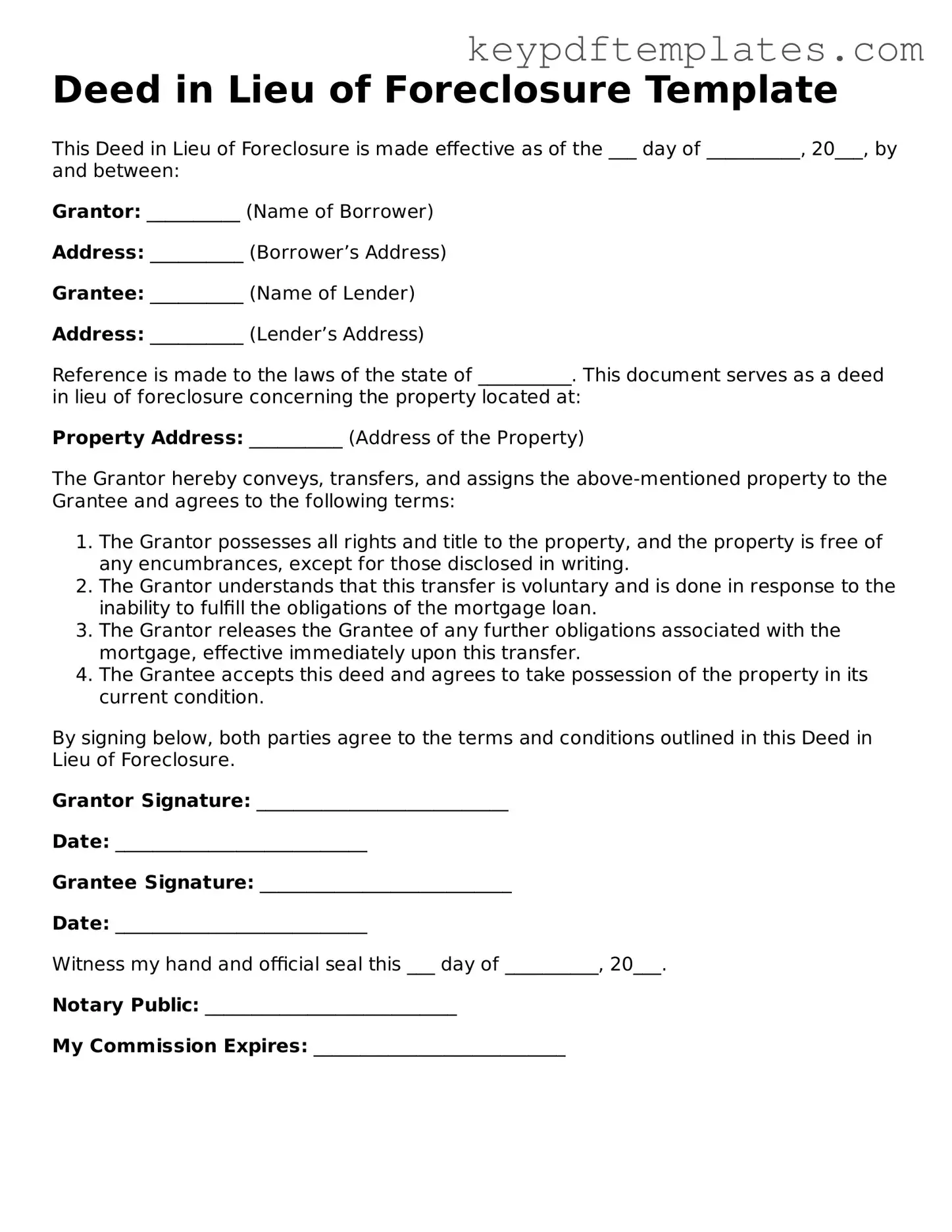Printable Deed in Lieu of Foreclosure Template
A Deed in Lieu of Foreclosure is a legal document that allows a homeowner to voluntarily transfer ownership of their property to the lender, thereby avoiding the lengthy foreclosure process. This option can provide a quicker resolution for both parties and may help the homeowner mitigate some financial consequences. Understanding this form is essential for anyone facing financial difficulties with their mortgage.
Modify Document Online
